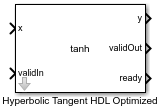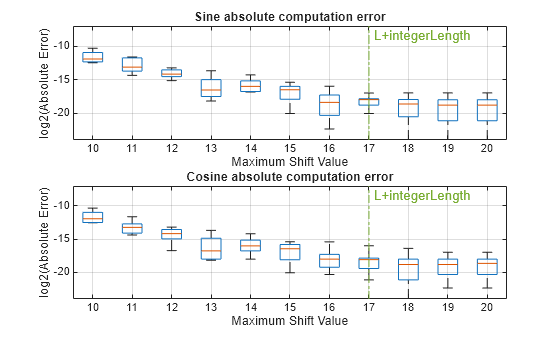Hyperbolic Tangent HDL Optimized
计算基于 CORDIC 的双曲正切并生成优化的 HDL 代码
库:
Fixed-Point Designer HDL Support /
Math Operations
描述
Hyperbolic Tangent HDL Optimized 模块返回 x 的双曲正切值,使用针对 HDL 代码生成进行了优化的 CORDIC 实现进行计算。
示例
端口
输入
输出
算法
参考
[1] Volder, Jack E. “The CORDIC Trigonometric Computing Technique.” IRE Transactions on Electronic Computers. EC-8, no. 3 (Sept. 1959): 330–334.
[2] Andraka, Ray. “A Survey of CORDIC Algorithm for FPGA Based Computers.” In Proceedings of the 1998 ACM/SIGDA Sixth International Symposium on Field Programmable Gate Arrays, 191–200. https://dl.acm.org/doi/10.1145/275107.275139.
[3] Walther, J.S. “A Unified Algorithm for Elementary Functions.” In Proceedings of the May 18-20, 1971 Spring Joint Computer Conference, 379–386. https://dl.acm.org/doi/10.1145/1478786.1478840.
[4] Schelin, Charles W. “Calculator Function Approximation.” The American Mathematical Monthly, no. 5 (May 1983): 317–325. https://doi.org/10.2307/2975781.
扩展功能
版本历史记录
在 R2020a 中推出




